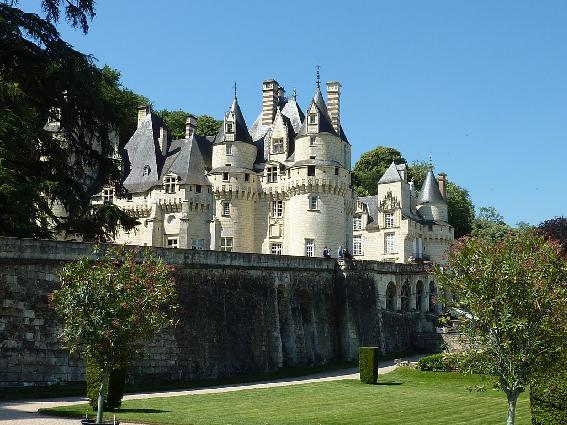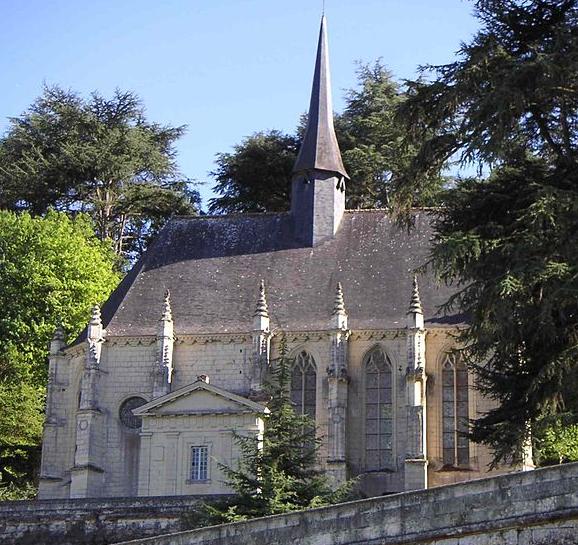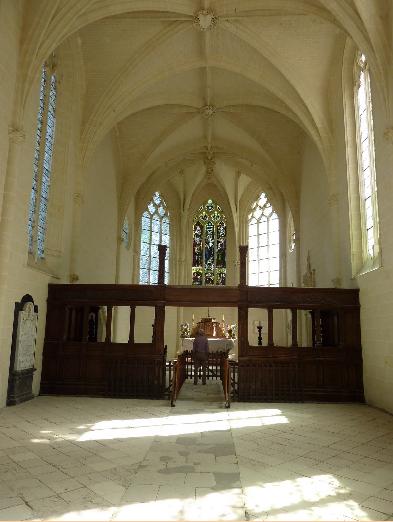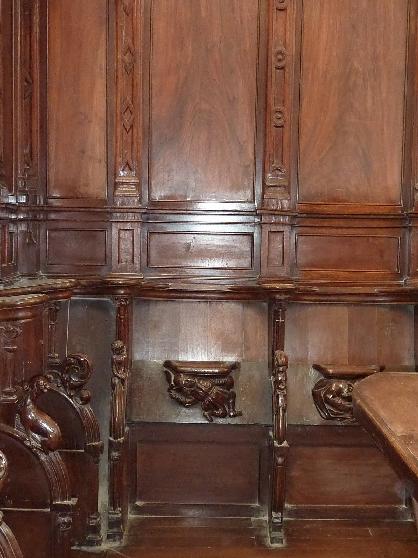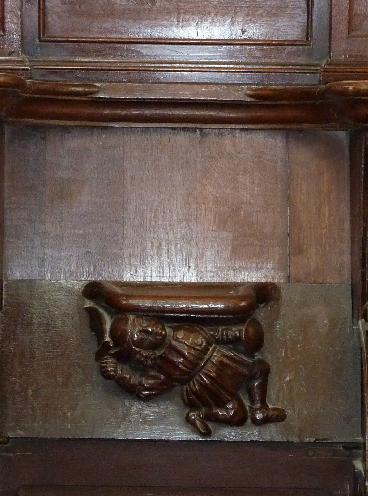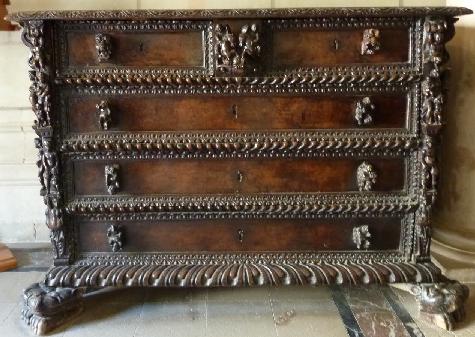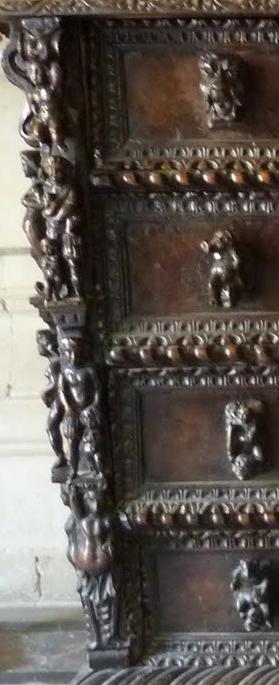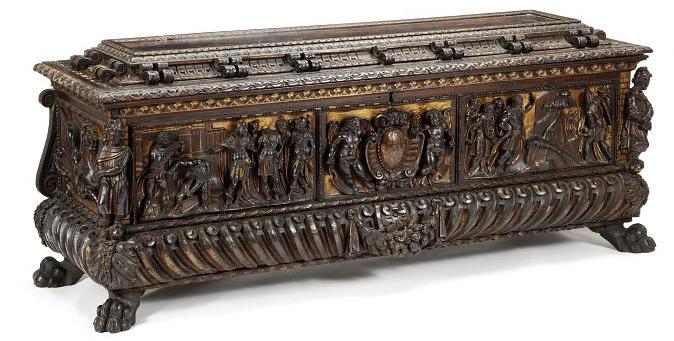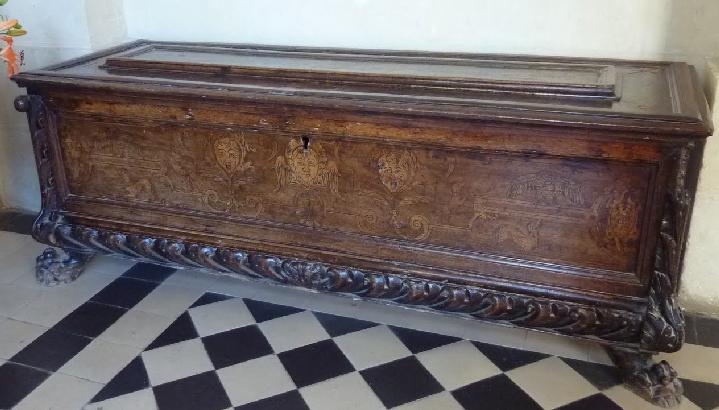
Candida Martinelli's Italophile Site

Main
Page This family-friendly site celebrates Italian culture for the enjoyment of children and
adults. Site-Overview
And Italian Wooden Chests -
Renaissance
The
Studiolo from the Ducal Palace of Gubbio, now housed at New York
City's Metropolitan Museum of Art
Look very closely and you may notice that your eye is being fooled.
The walls of this study are flat.
There are no cupboards nor shelves, nor real objects on those
shelves.
If you have any doubt of this, just visit the
Studiolo from the Ducal Palace of Gubbio, now housed at
New York City's Metropolitan Museum of Art. It's described
as the most important piece of Italian Renaissance Art in the United
States. (They provide an on-line tour with these images
and more.)
It was designed by Francesco di Giorgio Martini (b.1439–d.1502)
for Federico de Montefeltro, the highly respected and learned
Duke of Urbino (b.1422-d.1482). The work was executed
masterly by Giuliano da Majano (b.1432–d.1490). The study's flat walls are a work of stupendous art.
Inlaid wood (intarsia) is the medium that creates the
illusions of depth and shape. The varied colors of the
assorted wood types are the 'paint' for the artist. The grains
of the wood are used too, to simulate detail and form.
Italian marquetry products are still made in the form of
high-end flooring and furniture, like tables and cabinets and
cupboards. But the art of religious marquetry is harder to
find today. Below I provide a gallery of wood religious art
made not in Italy, but in Pakistan. Similar principles are
used and similar varied colored wood, similar varnishes create the
designs.
The designs are either embossed or inlaid. The pieces vary in size from 10 inches to several feet high/long.
The key chains are of course smaller. I hope you enjoy this small Gallery. I find the varied wood
colors soothing, making the religious art appear more pious
than if it had been painted on. I'm adding this page in time for Easter, but I hope people
can enjoy it all year round.
I recently visited the French castle/palace
Usse, along the Loire
River. It was build during the Renaissance over a castle from
the middle ages, surrounded by a moat.
Today the moat is drained to protect the
foundations of the ancient building. Many of the rooms are
open to visitors, as are the gardens, the stables, the wine cellars,
a prison, and a beautiful Renaissance chapel.
But by far the most beautiful objects in the
castle are from Italy, made by Italian wood artisans during the
Renaissance. The interior of the chapel boasts stunning and
entertaining choir stalls.
Each stall contains a joke. The seat that
folds up allowing kneeling shows a creature or person holding up the
seat and the person seated on it.
In the castle, there are several examples of
masterful Italian wooden chests. There are two Genoa Chests made in the 1400s.
Each stands about a meter high and are about a meter and an half
wide. (1 yard by a yard an half.) This is a dowry chest (hope chest, trousseau
chest). It was often more valuable that what was in the chest.
Each drawer could be locked with a separate key for security.
Marriage chests or cassoni were made in pairs.
They were emblazoned with the coats of arms of the relevant families
and often decorated with wedding scenes. For more, visit this
great archive of images
of cassoni. It could be loaded onto a ship for transport with
the bride and the family and it's size and weight would ensure it's
safe arrival (like a packing crate).
It's difficult to see, but the edges of the chest
have images carved of people, and the handles are each unique,
depicting people and mythical creatures.
Here is an image of one of a pair of cassoni made
around 1500 for Cosimo de' Medici. "This chest (cassone) (and its pair, also in the
V&A) were probably made to celebrate Cosimo I de' Medici's new title
as Duke of Florence and Siena."
At Usse, there were also other examples of cassoni.
This one has delicate etching in the wood depicting angels.
On this chest, you can make out the family crest.
And the most stunning example of Italian wood
craftsmanship at Usse is this jewelry cabinet from the 1500s, inlaid
with mother-of-pearl, ivory and lapis lazuli, with 49 hidden drawers
to keep one's valuables safe. Here it is with the two doors
open.
Visit my Easter page or my
Prayer page.

Intarsia - Marquetry, Inlaid Wooden Art
![]()

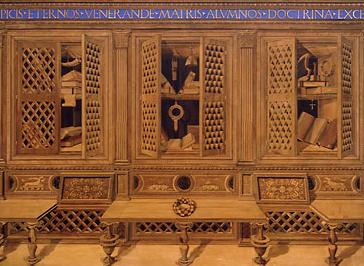
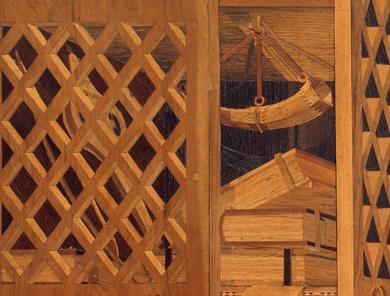
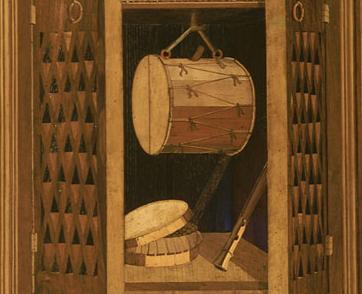
Italian artistry in the art of Intarsia, or Marquetry,
the French word for inlaid wooden art, was at it's peak
during the Italian Renaissance.
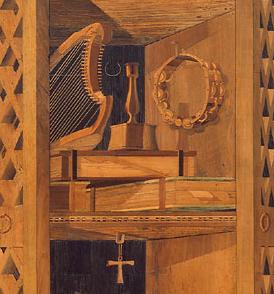
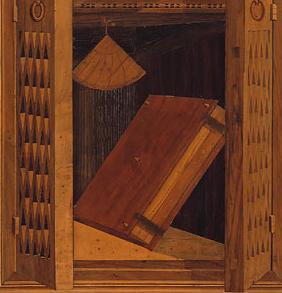

Italian Wooden
Chests from the Renaissance
